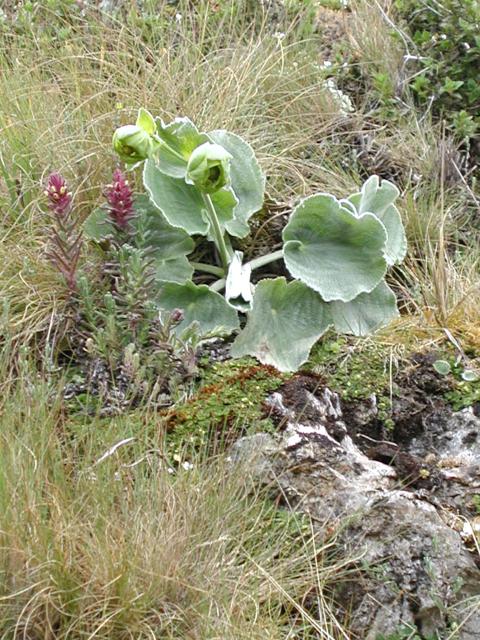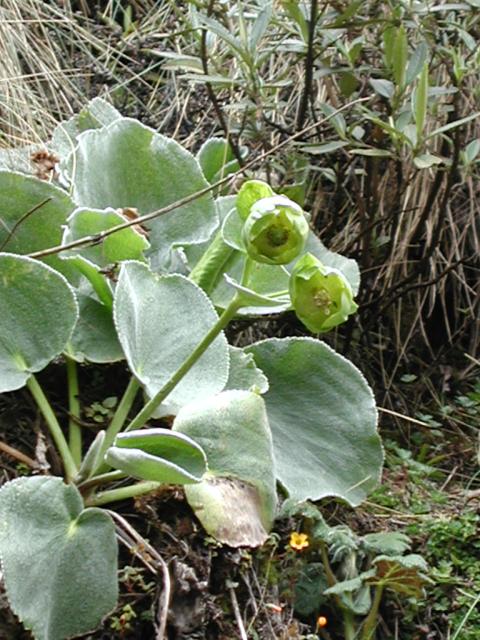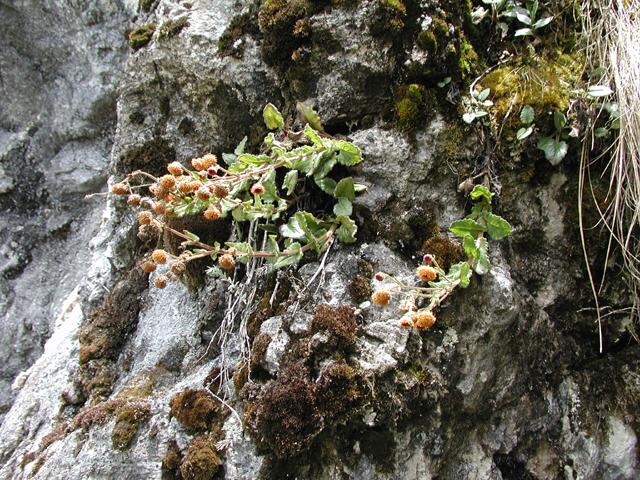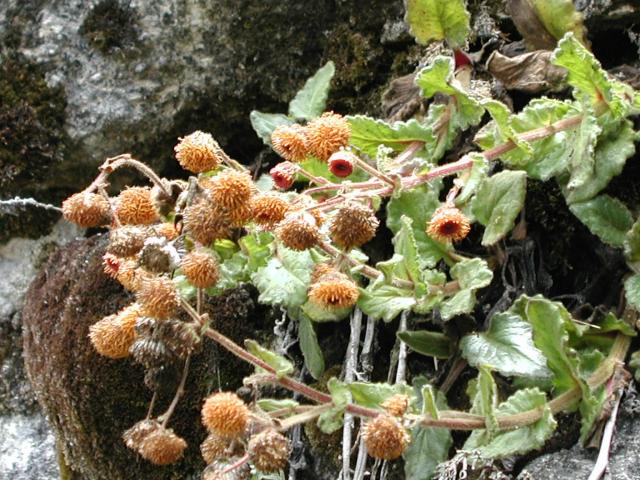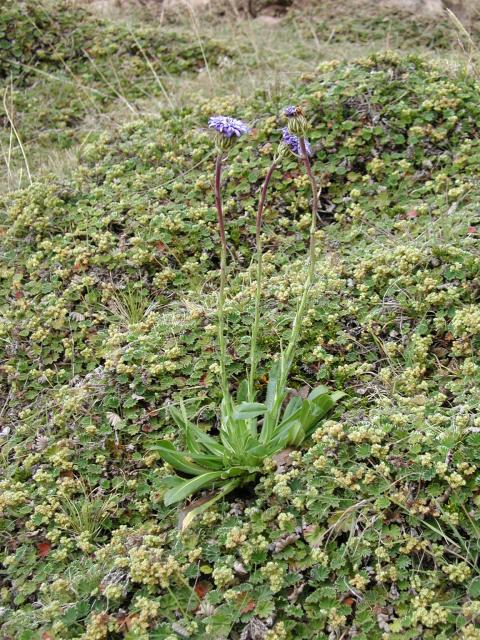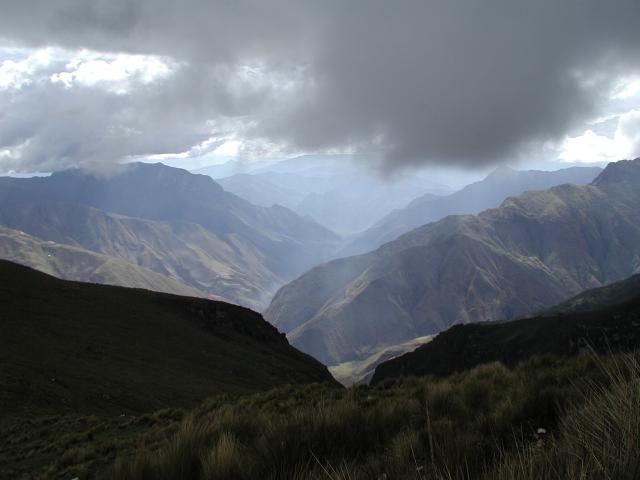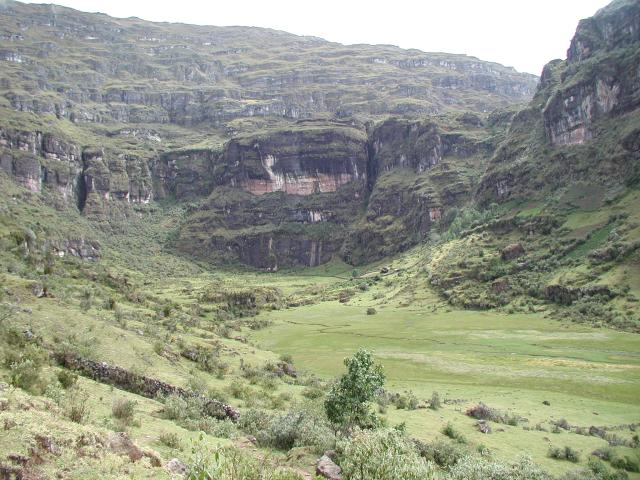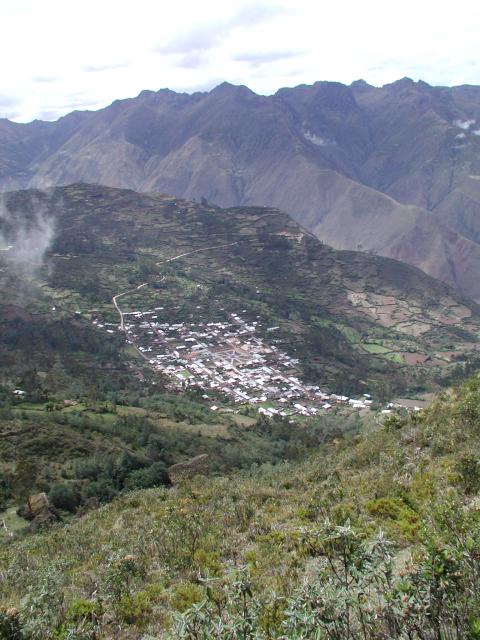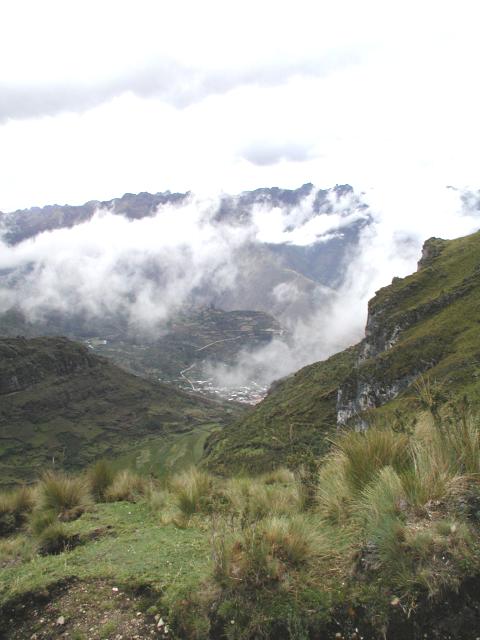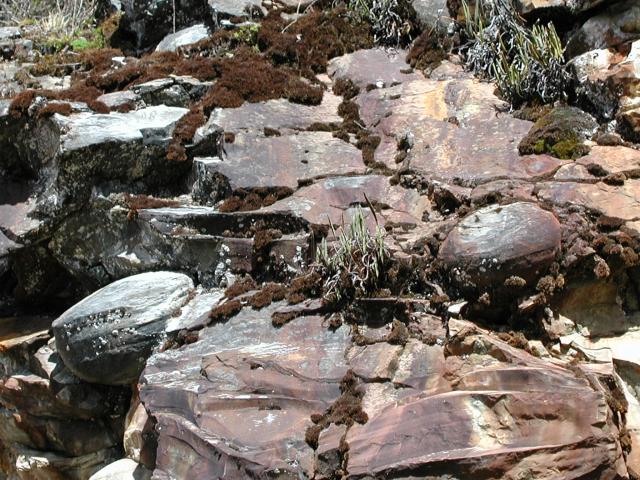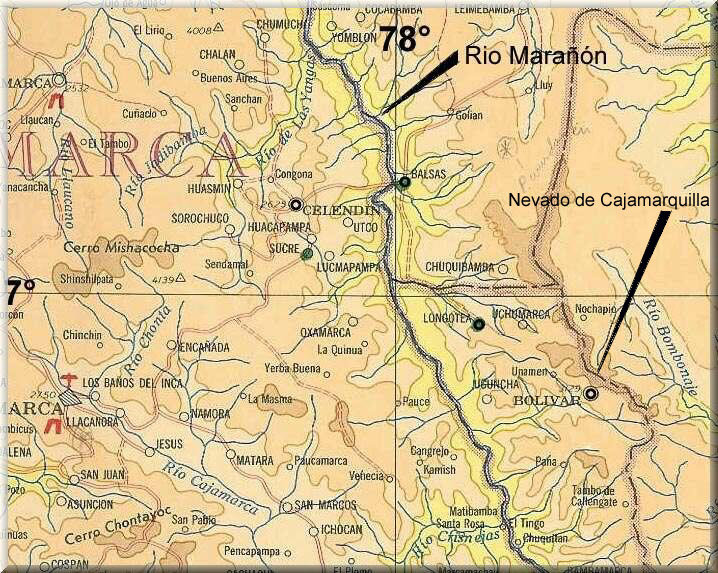|
In the upper reaches of the
Andean Cordillera of northeastern Department of La Libertad one can
encounter the jalca formations in the Province of Bolivar. This
area is accessable by road, only by entering the Department of La Libertad
from the north through Amazonas. After crossing the Rio Marañón
at Balsas, the route runs south along the eastern bank and then rising
abruptly to the town of Longotea. From there it is over the pass to
Bolivar. The city of Bolivar (7°09'S, 77°42'W) at 3000 m is
at the base of Nevado de Cajamarquilla, a mastif that rises at its back
to over 4300 m. At its upper reaches, the Rio Marañón
valley can be seen to the west. There is no direct connection by road
between Bolivar and the remainder of the Department of La Libertad.
On the road between Bolivar
and Longatea, one encounters unusual mineral deposits in the form of
large, round stones, often looking like "flying saucers" crashed
into the upper mantel of soil. There origin remains a mystery, but many,
many have been hauled off by travelers to be placed in their gardens
or used a door stops.
|




